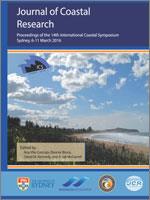Lee, H.; Kim, S., and Jun, K.W., 2016. The scour depth of the submarine pipeline area on the algorithm of the Radial Basis Function. In: Vila-Concejo, A.; Bruce, E.; Kennedy, D.M., and McCarroll, R.J. (eds.), Proceedings of the 14th International Coastal Symposium (Sydney, Australia). Journal of Coastal Research, Special Issue, No. 75, pp. 1382–1386. Coconut Creek (Florida), ISSN 0749-0208.
The submarine pipeline is a facility that requires frequent usage for transporting substances like crude oil or gas. Failures in the submarine pipeline can cause marine pollution and the cost to restore the induced damage can be great. Therefore, it is important to consider several impact factors that can help secure the stability of the submarine pipeline during its installment. Scour is one of the factors that cause great damage to submarine pipelines. In this study, existing experimental data from previous experiments are analyzed in order to predict scour depth and deduce the main parameters affecting scour. The deduced parameters are used and analyzed by the Radial Basis Function Neural Network (RBFN) for the prediction of scour depth.





